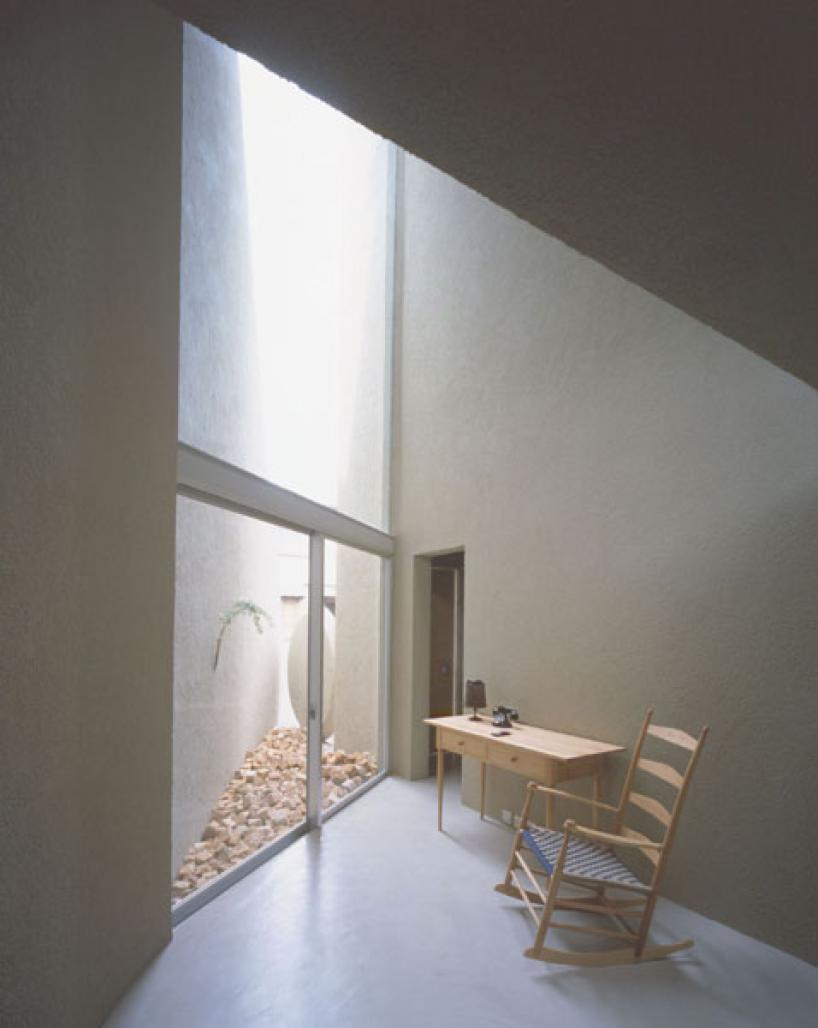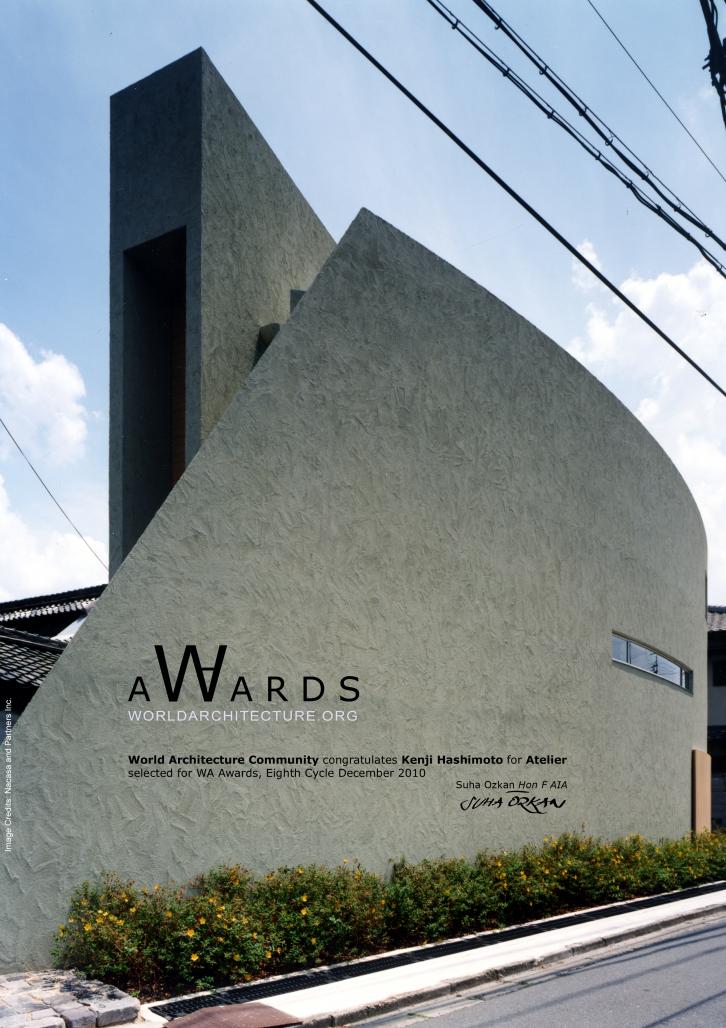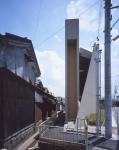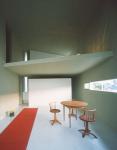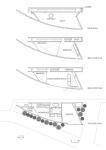My atelier is located in the residential area halfway between Osaka and Kyoto. The shape of its site looks like a triangle, getting narrower to the north. Among relatively old residential buildings, it stands across my parents house which was designed by my father, a building firm owner. I spent my younger days in their house, witnessing the changes of the town. In those days, on the site of my atelier was my fathers garage made by only corrugated sheets. This was extremely original and still fondly remembered.
This atelier is a three-storied house. It has a garage, a bathroom, and a workspace on the 1st floor, a kitchen and a dining area on the 2nd floor, and a bedroom on the 3rd floor with a study under the stairway to the roof. All floors are connected with one straight staircase. A long, narrow strip of red stained glass is installed on the south facade of this staircase, letting the symbolic light come during the day. The alcove on the other side is for indirect lighting, giving walls and floors a slight light at night.
All floors can get plenty of sunlight through the skylight, since the floors are not divided by walls and connected in the wellhole style. The curved wall on the west side has a line as if wrapping up each room, with a coarse texture done by a plasterer. All this creates a tender image on the outside.
I tried to use Japanese oriented soft colors so that the atelier house matches the surroundings. I also tried to locate each opening of the house where the privacy can be kept. However, the rectangular window on the 2nd floor is placed where the roof of my parents house is seen.
On rainy days you can enjoy seeing the water dropping and hearing its sound from every floor through the fixed window on the north side. The courtyard on the 1st floor is covered with cubic stones to absorb the water.
You can have a glimpse of the mountains of Kyoto far away over the cut off curved wall. Between the curved wall and the staircase, there is a circular wall as a buffer and it functions as a screen. The air conditioning duct comes from the main body, which is installed over the garage ceiling, and goes to the bathroom on the 1st floor, then under the floors of the 2nd and the 3rd. The outlet is at the slit where the wall and the floor come in contact with each other.
This residential building with an atelier might not seem so functional. I laid emphasis on the moderately tense atmosphere, the flow of light and wind, the importance of useless space, the savor of the texture, the beauty of the rain drops and so on. In this neighborhood, many houses are being rebuilt. But unfortunately they are built practically in pursuit of more rooms or mere convenience.
This house may seem too characteristic but as I stated before I wanted to stick to my philosophy in designing the house.
The Japanese style house where I spent my youth might have influenced me in many ways, somewhat educated me and made my design background of the present.
As time goes by, this atelier house will undergo changes. Hope I will too.
2000
2001
Structure
RC (bearing wall structure)
Site area
120.78?
Building area
64.73?
Total floor area
163.74?
1st floor area
64.67?
2nd floor area
52.63?
3rd floor area
41.75?
Penthouse
5.29?
Exterior finish
rough plastered wall
old fireproof bricks
wooden, steel, and aluminum sash
Interior finish
plastered wall and ceiling
stucco floor
Atelier by Kenji Hashimoto in Japan won the WA Award Cycle 8. Please find below the WA Award poster for this project.
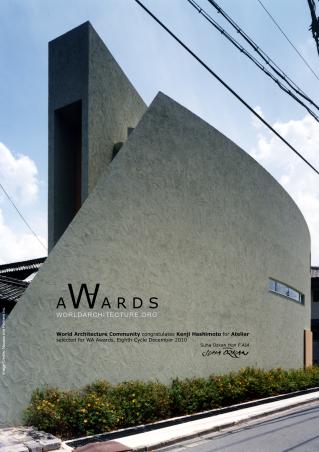
Downloaded 179 times.
